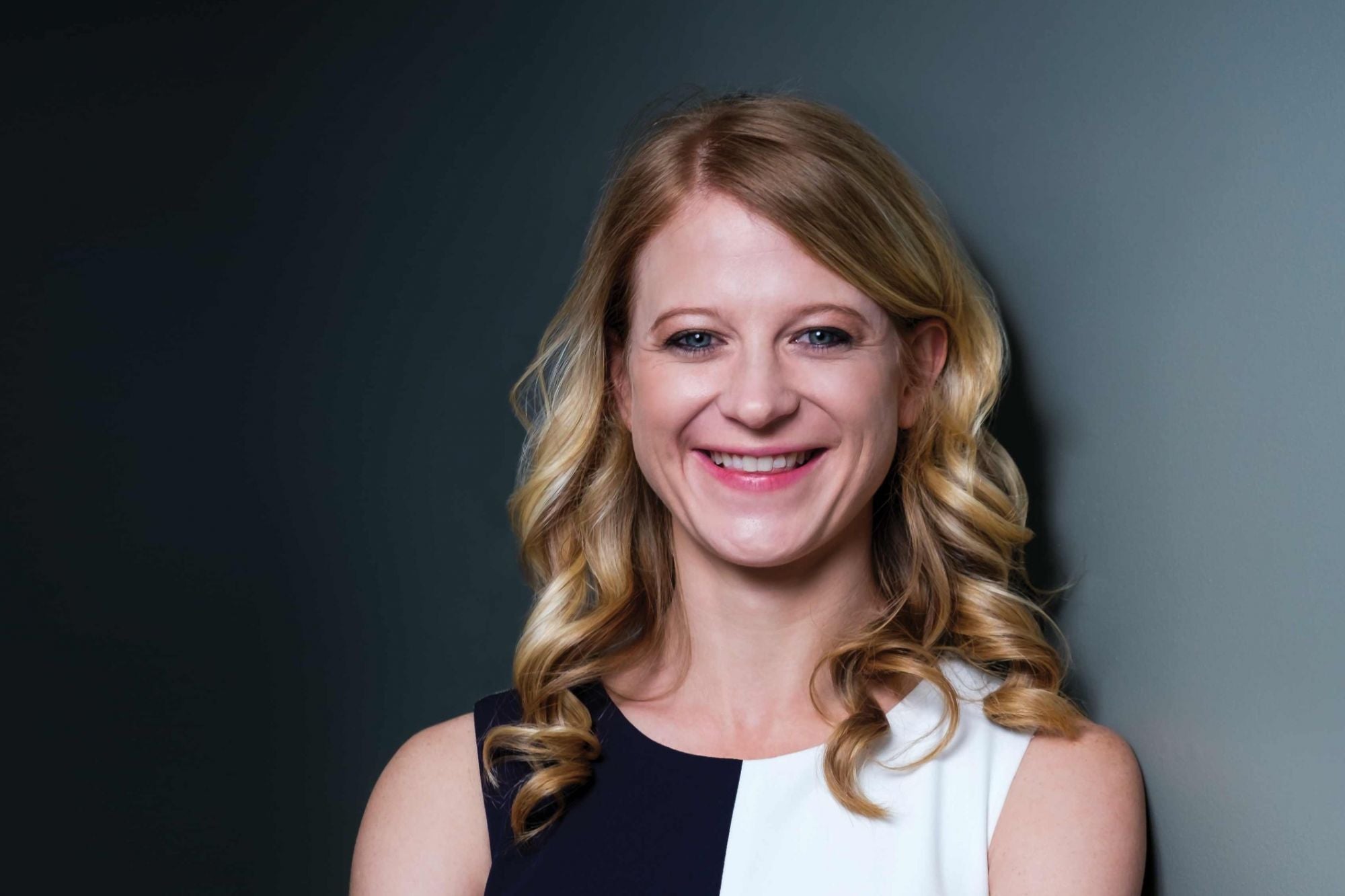How Stacey Brewer Raised R200 million in Funding to Build Spark Schools SPARK Schools is a disruptive educational business model that has garnered so much investor interest, its founder, Stacey Brewer, has secured R200 million in funding. Here's how she's turning a traditional, entrenched industry on its head to solve real problems and bring about systemic change.
You're reading Entrepreneur South Africa, an international franchise of Entrepreneur Media.

PLAYER: Stacey Brewer
CO-FOUNDER: Ryan Harrison
COMPANY: SPARK Schools
NO OF SCHOOLS IN NETWORK: 15
2019 GOAL: ± 12 000 students and 20 schools
EST: 2013
VISIT: www.sparkschools.co.za
In 2012, Stacey Brewer raised R4,5 million in her first round of funding. It gave her an 18-month runway to focus on launching her low-fee private school model, SPARK Schools.
This was followed by R28 million from an international fund, the Pearson Group's Affordable Learning Fund. The business's most recent round of funding was a Series B round that raised R150 million in 2016, taking SPARK's overall funding to R200 million.
"We've committed to having 20 schools by 2019, which will enable us to educate 12 000 children," says Stacey. "Our investors still expect a 10X return, but it's "patient' capital, designed to support impactful business models.
Educational companies are highly valued. They provide a good annuity income, but investors also love what we do because we're focused on achieving systemic change, and funds are looking for that. More and more, funding mandates are focused on the greater good.
"This is still a business though. One school is not a business — you can't scale it, and so there's no growth opportunity. If you can build a network of schools however, you can benefit from economies of scale."
Here's how Stacey and her team are turning the traditional education model on its head, and in so doing, are providing value for children, parents and their funders alike.
IF THAT'S HOW IT'S ALWAYS BEEN DONE, IT'S TIME TO DO THINGS DIFFERENTLY
As a low-cost private school, SPARK aims to make a quality private school education accessible to parents who cannot afford traditional private school fees. What Stacey and her team soon learnt however, is that everyone is looking for quality, irrespective of social and economic status.
"When we started, we thought our price would be a huge selling point. We soon realised it actually switched people off. There was an assumption that you get what you pay for, and that low fees mean a poor-quality education," says Stacey. "South Africa is very aspirational, and people want the best for their children.
"We needed to reposition what we were doing and focus on the fact that our schools have a modern, aspirational look and feel, and that we deliver a quality education. Once we had driven those points home, we could discuss price.
"Now that we're becoming known and our kids are our ambassadors, this is a different story, but it was very important when we launched. "Parents vote with their feet — just being cheap isn't enough. We've received the investment we have because we've developed a model that's both affordable and can compete internationally."
A full year's tuition at SPARK for 2018 is R21 000. How do you provide a quality educational experience at a fraction of the traditional price? To start with, you need to embrace a disruptive mindset. Stacey says "no' to doing anything the traditional way, as this will immediately drive up the school's price point, and the business will lose its "why'.
So, what's the solution? "You need to embrace your constraints. It takes a special person to be involved in our team. We need individuals with a high level of accountability, and who can focus on being lean and agile. But it's amazing what we come up with when we're forced to think out the box.
"Raising our fees is the easy answer, and once you go that route it doesn't stop. Instead, we need to be excited by the opportunity to come up with solutions given the constraints we're faced with.
"If I hear the words "because this is how we've always done it' or "that's how it works', I immediately know I have to change it. Too much is done simply because it's always been done that way. If you want to change an industry, you need to find completely new solutions to the same problems."
THE BIG IDEA
Let's take a step back to how the idea for SPARK Schools originated. Stacey was studying an MBA in Entrepreneurship at GIBS (the Gordon Institute of Business Science).
During her economics lectures she discovered that although a high percentage of South Africa's budget is allocated to education, South Africa still ranks amongst the worst education systems in the world.
"I wanted to understand what was going wrong, and to research what the solution could be," she says. Stacey wasn't planning on launching a new and disruptive education model, but she did need a theme for her thesis, and she wanted to address a real problem.
"I believe that all entrepreneurs should be advancing the human race. We need to question what we're doing to change society. What problem are you solving? How are you making the world a better place? How are you making it more sustainable?
"This view meant I gravitated towards one of the biggest problems I believe we face as our country. One of my professors agreed. She liked the thesis topic, and advised me to start networking in that space. I needed to get on the map and speak to other like-minded people who were interested in education."
Stacey took her professor's advice, and started networking. "This was how I met our first angel investor, David Gibb, who was on sabbatical after resigning from his position as head of research at STANLIB.
"At the time I had no plans to start this business, which meant funding wasn't even a thought, but I found a very supportive mentor who is very passionate about business and education. "Dave and I had incredible discussions around the problem, and what the solution needed to take into account.
"I still had no concrete ideas of actually launching a school, but I was on a path that clearly showed we needed to create something completely new. Tweaking the current model wouldn't be enough.
"The MBA and my thesis also forced me to take a deep dive into my research. I'm not sure start-ups always do this, and certainly not to the level I took it. But it's been a very important success factor for us.
"The research I conducted while completing my thesis has allowed us to position ourselves very well within our market. More importantly, it helped us get from "what?' to "how?'" Thanks to Dave and Stacey's own tenacity, she was also developing a strong network in the educational space.
"Dave introduced me to the blended learning model in the US. He then offered to fund a trip overseas so that we could evaluate if the tech the blended learning model is based on would be feasible in South Africa."
It was at this stage that Stacey asked Ryan Harrison, a tech-savvy friend from university, to join her on the trip. "I understood the educational landscape, but not the tech — I asked Ryan to join me so that he could evaluate whether or not it suited our local conditions."
Stacey and Ryan returned to South Africa, and she knew this wasn't just an idea or a thesis anymore. "I knew I was going to open a school. Ryan was also excited by the concept and wanted to join me. Our trip introduced us to Rocketship Public Schools, who have pioneered blended learning in the US.
"They were very open to us, and shared everything they're doing. This feeds back to purpose — they want to change education and solve a real need, and they're supportive of anyone who shares that passion. Two of their staff came and joined us when we launched, and one is still with us today."
THE LESSON: Stacey didn't start out thinking she wanted to launch a business and trying to figure out what that would be. Instead, she found something she was passionate about — something she knew was broken and needed real, innovative solutions to fix.
That passion led her down a path where she learnt as much as possible about the topic, met other passionate people with ideas and solutions to share, and finally developed a model that would help her solve a societal need and drive systemic change.
MATCHING PROBLEMS WITH SOLUTIONS
Once Stacey and her co-founder Ryan had their big idea, they needed to launch. A school (or more specifically a network of schools) requires capital. You can't bootstrap a school. This is one more reason why you need an idea that will drive real change (and returns) — something investors are increasingly looking for.
"David Gibb gave us some seed funding and bridged the gap to find formal investment, and GIBS introduced us to a network of angel investors. This was how we raised our first round of funding of R4,5 million to launch our first school."
Interestingly, raising funding isn't just about pitching your business to investors — it's also a dialogue between the entrepreneurs and their investors. At the end of the day, it's in everyone's best interests for the business to do well.
"At that stage, we were looking at buying or building a school," says Stacey. "Our investors disagreed. Their advice was that we prove the model instead of focusing on property. We needed to focus all of our attention on the problem at hand. What makes education expensive?"
The basic premise of all innovation and disruption is starting with the problem. If you can clearly define the problem, the solution will often start to present itself.
In the case of education, particularly providing low-income earners quality but affordable education, the problem is cost.
"Infrastructure and salaries are the two biggest costs. To bring down fees, you need fewer teachers and smaller spaces. You also need to achieve both while improving quality. That's the benchmark. Once we knew that, we just needed to figure out how to do it."
An added element was the investment component. Funders are interested in businesses that can scale. As we've already mentioned, one school is not a business. But a network of schools is.
Once you have a network, you can leverage economies of scale, which is when investors start seeing
their returns. "Once we were introduced to the blended learning model, we realised it was exactly what we were looking for.
"The traditional model doesn't support low fee solutions. We needed a different solution. I did not want to rely on donor funding. "NGOs become too dependent on donors and end up struggling over time.
"They're also constantly needing to raise cash. I want SPARK to live far beyond me. If we built it properly from the beginning, with decent margins and a sustainable price point, we knew we'd get investors on board — particularly because so many funds are now interested in creating systemic change as well.
"We quickly realised blended learning was the solution we were looking for. It's a model that drives cost efficiencies by focusing on the utilisation of assets. It's also data rich, which drives quality. Most importantly, it can be scaled.
"At first, we were fast followers, now we're evolving into leaders in this space. Our delivery of quality at our price point is one of the best in the world. We never, ever throw cash at a problem. Instead, we rethink and redo the system — that's where we know we'll find the solutions we need."
THE LESSON: Start with the right problem and you will find a solution. If you aren't clear on the problem though, you'll be working around it, either following existing solutions or making assumptions about what people need. You need to dig into the detail. The problems that really need solving are often complex, so learn to interrogate things from every angle.
FORGET IQ AND EQ, WHAT YOU NEED IS AQ
Stacey is a firm believer that the success of SPARK is rooted in her team's AQ, or Adaptability Quotient. "We've gathered a team of smart thinkers who are able to adapt quickly to new challenges, based on the ingrained idea that the old solutions won't work. The problem is that you're unlikely to be adaptable if you don't also have passion.
"The name for our schools comes from William Yates, who said that education is not the filling of a pail, but the lighting of a fire. It's about igniting passion, and we needed that same passion to really start solving our education crisis. We want to spark a change across the country.
"I bring passion, and my team has passion and common purpose — when you have these ingredients, you figure things out," says Stacey. "When you're constrained, both in terms of cash and human capital, you need to be smart.
"We call it "frugal' innovation. If you don't throw people or cash at a problem, you really find solutions. You can also seldom cut back costings once they are there. I love a constrained environment — I see it as an opportunity.
"We had one major advantage: We didn't have an education background, which meant we questioned everything. More importantly, it means we're not precious about anything. We're willing to try new things to see if they work, and if they achieve our objectives.
"I've learnt that too often, people don't even know why they do things — they just do them because that's the way it's always been done. Infrastructure and salaries are the two highest costs we need to solve.
"We've combined two blended learning models to address this. The first is lab rotation. From Grade R, our students are in and out of learning labs. Our teachers introduce a concept in the classroom, and then the students rotate to a learning lab, where they practically work through problems related to the concept on computers.
"Data is gathered during these sessions and addressed. Our teachers see multiple students based on this rotation. The learning labs are run by facilitators, not teachers. At full capacity it's a highly operational schedule, and our students are always in small, flexible groups of four to six children. Our staff cover multiple classes and are experts within specific areas."
THE LESSON: What skills and attributes does your organisation need most? This may change as you start scaling, but in order to know who you need in which positions, you need to understand your organisation.
SCALE FAST, BUT LEARN FASTER
You'd think that finding a model that solves the cost versus output problem South Africa's education system currently faces would have been Stacey's biggest challenge. It wasn't.
"Our biggest challenge has been scale. We've doubled our network of staff and kids every year since we launched our first school in 2013. In 2017 we had 4 000 students and 450 staff. This year we are educating 7 000 kids with a staff of over 700.
"We understood 4 000 kids, but towards the end of last year we needed to seriously consider what 7 000 kids would look like. You have to think about it before you get there. What does 20 000 kids look like? You're going from a village to a city. There are changes, and you need processes and systems to cope.
"I personally need to grow faster than the organisation. I need to reinvent myself and my role every six months and stay ahead of everyone else. It's imperative that leaders of organisations are self-aware and willing to improve themselves.
"I have mentors and coaches. I've built a network of people that I can reach out to when I have questions or challenges. I love feedback, and I'm always asking "what's next?'
"What does the company need from me? Today I'm less operational and more focused on strategy. What are we doing? How do we start leading our industry? Are we engaging other stakeholders?
"These aren't only local questions. What are people doing and thinking globally? We can't solve this by ourselves. We need other people to open schools, to offer more choice for families. People vote with their feet, and that's good for business.
"I'm all for competition. The people who benefit from healthy competition in this sector are the families and their children, because it puts the power in the family's hands in terms of choice and accountability.
"The problem is also so big, there's room for multiple players." A big part of Stacey and SPARK's success is the team she's built around her. This frees her up to focus on strategy, but it also gives the business a growth foundation.
"Hiring the right people for their specific roles has been essential for us. You need to understand your organisation and its needs to get this right. At head office, we need two different types of people: Those who can build and improve schools, and those who can focus on operations and structure.
"Scale is tough on people. Things break when you're scaling, and you want them to break quickly so that you can fix them. If you're too slow you'll actually miss stuff, but it takes a very specific type of person who can operate at that pace."
THE LESSON: Organisations that are in scale-up mode are changing quickly. Does your team have the tools and skills they need to handle that change?
Do you support them? Does everyone understand why changes need to happen quickly so that you can solve problems sooner rather than later?












